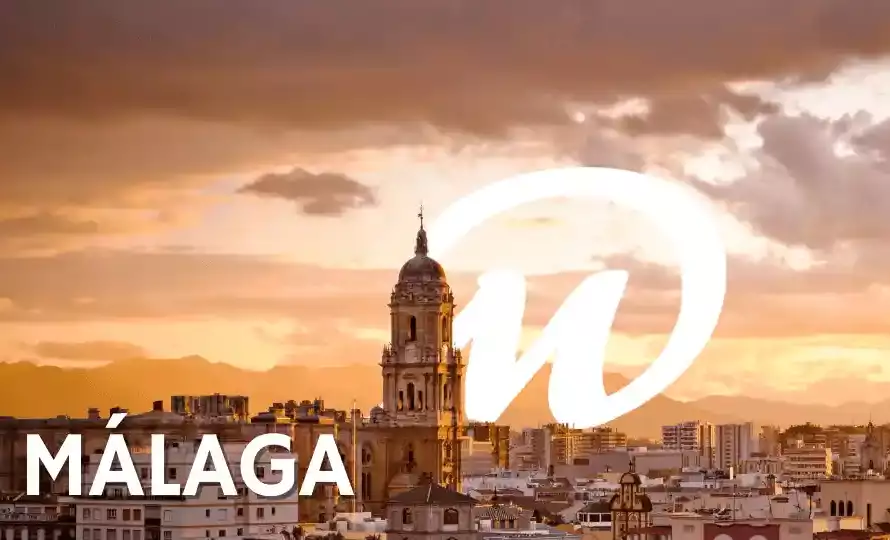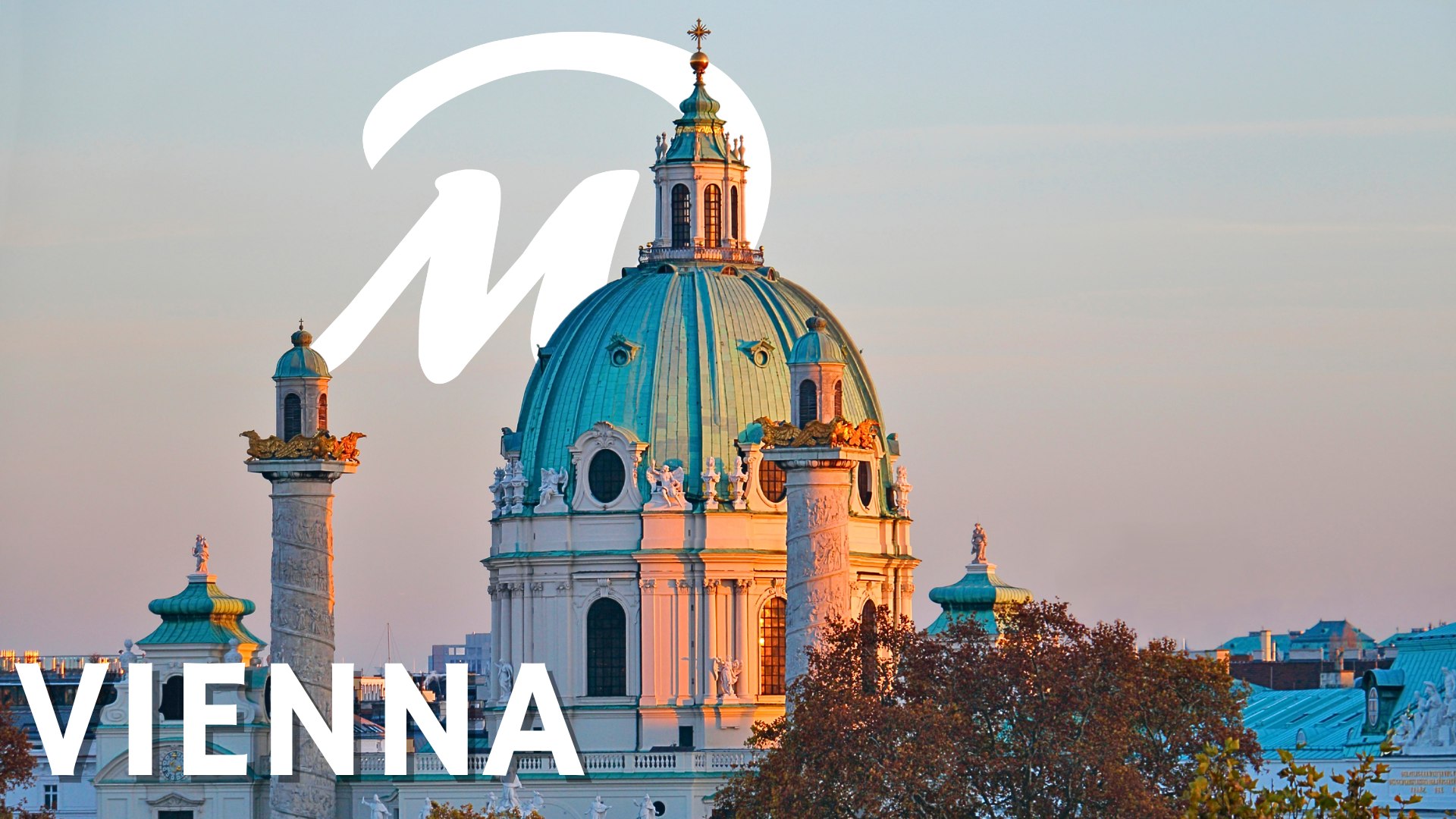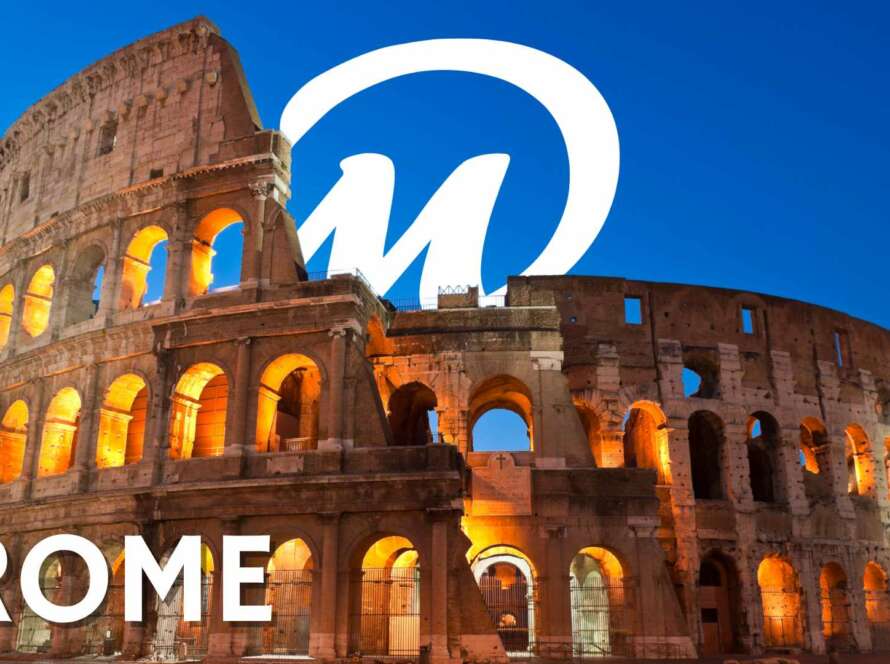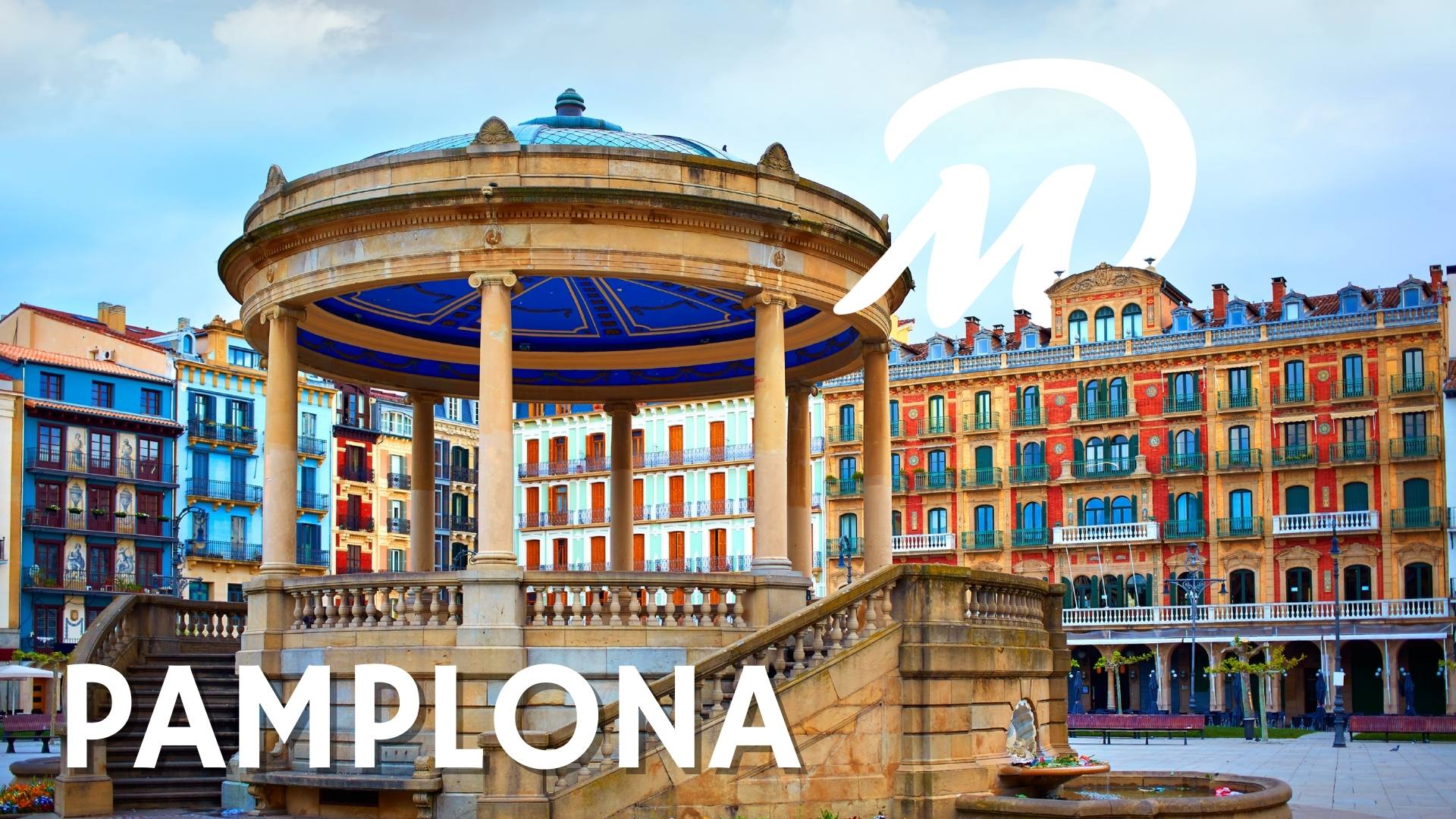“The land of Soria is arid and cold, Through the hills and bald sierras, green meadows, ashen hills. Spring passes, leaving its tiny white daisies among the fragrant grasses” This is how Antonio Machado described the city where he discovered love. If you want to discover what to see in the city of Soria in 1 day, here is a summary of our favourite places. Here we go!
Discover things to do in Soria, visit its monuments and its gastronomy in a route that you can do in a day.
⌛ DO YOU WANT TO KEEP SEARCHING THROUGH BLOGS, OR WOULD YOU RATHER HAVE YOUR SORIA GUIDE READY TO GO?
DareMapp makes it easy. Enjoy the COMPLETE GUIDE ON YOUR PHONE and explore every corner in your own way, with no schedules and at your own pace.
⌛Do you want to keep searching through blogs, or would you rather have your Soria guide ready to go??
DareMapp makes it easy. Enjoy the COMPLETE GUIDE ON YOUR PHONE and explore every corner in your own way, with no schedules and at your own pace.
Things to do in Soria, Pure Head of Extremadura
The easternmost capital of Castilla y León is the smallest in the region, with just over 40,000 inhabitants. The nucleus of the so-called Empty Spain, its streets and, above all, the province, have a rich history, witness to historic battles, famous people and a rich culture.
The small capital has a historic centre that is easy to explore, as well as the possibility of crossing the city on foot in less than an hour. This fact allows us to discover what to see in Soria and in almost all its corners in an intense touristic and gastronomic day. Shall we start?
History and Origins of Soria Capital: Things to do in soria
If you are looking for things to do in Soria Capital, it is essential to start by getting to know its fascinating history and origins. This city, with a rich heritage spanning over two thousand years, offers a unique insight into the historical and cultural development of the region.
The First Settlements: The Origin of Soria
To understand the things to do in Soria, it is essential to know about its earliest settlements. The history of Soria dates back to the Iron Age, when the Celtiberians established the first settlements in the region. These ancient inhabitants left a lasting mark that has influenced the evolution of the city.
⤵️ We’re pretty sure you want your trip already planned. Want to know how?
With DareMapp, forget about wasting time. Explore Soria at your own pace, with no schedules, thanks to our complete self-guided tour.
Roman Influence in Soria
The city of Soria, known in Roman times as Civitas Soriana, played an important role during Roman rule. The Romans established a military camp in this strategic location, which contributed to the urban development and the consolidation of Soria as an important centre in the region. Traces of this period form part of the historical sites that are now essential when considering the things to do in in Soria.
The Middle Ages and the Reconquest: Transformation of Soria
During the Middle Ages, Soria established itself as an important religious and administrative centre. In the 11th century, it joined the Kingdom of León and, later, the Kingdom of Castile during the Reconquest. This period marked the growth of the city with the construction of key buildings, such as the Cathedral of San Pedro. These monuments are highlights to explore when considering the things to do in in Soria.
Renaissance and Modernity: Soria’s Evolution
In the Renaissance, Soria experienced a cultural and architectural boom that left a lasting mark on its urban landscape. The city continued its development throughout the 19th and 20th centuries, facing economic challenges but maintaining its historical essence. The restoration of several monuments and the preservation of its heritage have been essential to the Soria we see today, a place full of history that remains relevant when looking for things to do in Soria.
📲Do you want to keep searching online or start your adventure now?
With DareMapp, you won’t waste a single minute:
Soria Today: The Best Things to do in Soria Capital
Today, Soria is a city that combines its rich history with a vibrant modern life. When considering the things to do in in Soria capital, don’t miss historical monuments such as the Cathedral of San Pedro and the Church of Santo Domingo. In addition, the Museum of Soria offers a comprehensive insight into the city’s past.
Soria also offers splendid natural landscapes. Places such as the Cañón del Río Lobos and the Laguna Negra are perfect for nature lovers looking to enjoy the beauty of the surroundings. The combination of historical heritage and natural beauty makes Soria an exceptional destination that reveals the many layers of its rich cultural heritage.
In short, as you explore the things to do in in Soria, you are immersed in a history that spans from Celtiberian times to the present day. Every corner of the city tells a part of its past, making Soria a place worth discovering.
Tips to travel with peace of mind
When everything is ready — flights, hotel, itinerary — there are only two more things you need to travel worry-free: a good internet connection and reliable travel insurance.
✔ Get an international eSIM already set up on your phone. No need to change your SIM card, search for Wi-Fi, or pay for roaming. Activate it before your trip and enjoy unlimited data from the very first minute, wherever you are.
✔ Take out travel insurance that includes medical assistance 24/7, coverage for cancellations, theft, and — most importantly — advance payment of all medical expenses without you having to pay, wherever you are. Because in a new country, what matters most is feeling safe. Moreover, DareMapp offers you a 5% discount.
Both services can be arranged online in less than 5 minutes, with no paperwork required.
Don’t leave it to the last minute!
👉 Activate your Holafly eSIM at the best price here.
👉 Take out your travel insurance with IATI and get a 5% discount.
Gastronomy
If there is one thing Soria is known for, it is its Torreznos. The portions of marinated lean pork are a nationally recognised delicacy, so there is no better opportunity to try them than in many of the capital’s bars and restaurants.
Along with torreznos, tarta costrada, lazos de chocolate or Castilian dishes, they form part of a gastronomy clearly marked by the city’s freezing weather. So, whatever the time of year you decide the things to do in Soria, make sure you set aside part of your visit to enjoy the delicacies and get your strength back for the walk we are about to take.

🤤 Mouth watering, right? Don’t worry, ours too. That’s why we’ve picked the best food spots in Soria for you.
But you already knew that — we show you everything you need so you don’t waste your time. Just hit the button and say goodbye 👋🏻 to endless scrolling.
Things to do in soria Capital in 1 day
We suggest a visit through a large part of the city, but especially through the historic centre and the areas around the Duero River. And if you still don’t know what to see in Soria Capital, there are some abandoned monuments, such as the remains of the city walls, of which it is difficult to see samples, although we offer you several options.
Santo Domingo Church
This church, located just a few minutes from the town’s Plaza Mayor, is one of the best-known and most characteristic examples of Romanesque architecture. Built in the 12th century, it has undergone various alterations throughout its history, shown in its clearly differentiated parts. One of the most evident corresponds to the 16th century, with a clear late Renaissance style.
The main feature of the temple is its façade, where we highlight 2 structures: an upper rose window (divided into 8 portions, with richly decorated voussoirs) and the façade, a sample of one of the 5 examples in the world of the iconography “Trinidad Patérnitas“. Of course, the photograph of this façade is one of the basic things to do in Soria.
Bullring
This modest bullring hosts part of the activities of the most important festivities of the city: the festivities of San Juan or of the Madre de Dios.
Due to its small size and limited seating capacity, it has been affectionately known as “La Chata” from its creation to the present day. Since its creation, the bullring has been very modest, in keeping with the town. However, on its façade you can still see the remains of the original bullring built in the 19th century. The Puerta Grande is also believed to have come from another convent of the time.
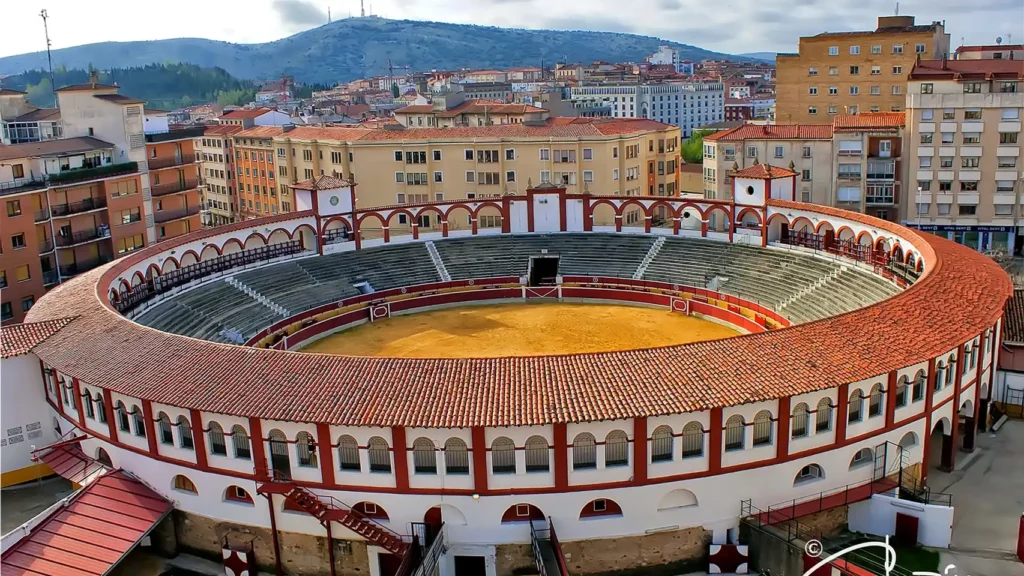
When the bullring was created, this location was decided upon due to its importance in the festivities. Until then, the bullfights were held in the Plaza Mayor of the city.
The Alameda de Cervantes
Also known as “La Dehesa”, it is one of the oldest public gardens on the European continent. Its extension is enormous, with several streets through which the inhabitants of the city stroll and enjoy the calm of the trees. It also has a meadow in “El Alto”, where in good weather, children and young people can be seen enjoying nature.Visiting La Dehesa is one of the top Things to do in Soria, as it offers a peaceful escape in the heart of the city.
The history of this garden begins in the 12th century, with the need to create a meadow to feed the community’s livestock. Its ownership changed, but it was used as a pasture for animals until the beginning of the 20th century. Just at that time the name was changed to the current one, celebrating the 3rd centenary of Don Quixote. Learning about the rich history of this park is among the most interesting things to do in Soria, as it reflects the city’s deep-rooted traditions.

In the middle of the 16th century, the Vera Cruz brotherhood created a shrine within the Dehesa. This is the Hermitage of Our Lady of Solitude, built in the 16th century by order of the Counts of Gómara. Inside is the Virgin of this dedication, and together with the aforementioned Christ, they form the titular images of the Brotherhood of La Soledad.
Right next to the chapel (in a square in the Alameda), you will be next to one of the most interesting sights among the things to do in Soria: a tree with a small temple surrounding it. It is a tribute to the extinct elm tree that stood on the same spot. It was surrounded by a wooden structure, changed at the beginning of the 20th century for the metal one you see today, in which the City’s Municipal Band gave concerts. Hence its name: “The Tree of Music”.
If you like this content and want to continue discovering other things to do in Soria and other cities in Spain, visit our Blog and download the DareMapp app to enjoy a complete tourist experience.
🚀 You already know the essentials… now it’s time to explore them.
🗺️Your route through Soria, with DareMapp
📍Over 65 points of interest
🚀An organized route to optimize time
💡Recommendations, excursions & unique experiences
❓Quizzes, tests, and over 4 hours of narrated content
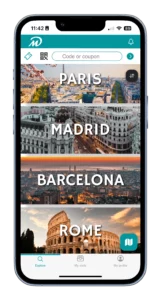
El Collado
As soon as we leave the Alameda de Cervantes, we find ourselves in front of a square that leads to a long pedestrian street. This square has been one of the most important centres of the city, and since the 1930s it has been called Plaza de Mariano Granados in honour of the philanthropist from Soria. Exploring this historic square is one of the essential things to do in Soria, as it serves as a gateway to the city’s bustling streets.
Continue along the main avenue to discover Calle de El Collado, the nerve and commercial centre of the city. This is a long avenue that joined the Plaza Mayor and ended at the city limits. The street itself begins just past the Plaza de Herradores, situated a few metres ahead of the Plaza de Mariano Granados. Strolling through El Collado is among the best things to do in Soria, as it allows visitors to soak in the city’s vibrant atmosphere, historic charm, and lively commerce.
If we continue along El Collado, we will notice the high presence of shops and businesses on both sides. The buildings that line it also have a high historical component. The old palaces (now demolished) and the so-called “Círculo de Amistad Numancia” (Numancia Friendship Circle) stand out. This is a long-established association with numerous activities in the city.
Palace of the Counts of Gómara
Next to the Collado, we can see a palace to visit in the city of Soria. Created at the end of the 16th century by the Río y Salcedo family, to demonstrate their economic power and with an imposing appearance and a square tower, King Felipe II vetoed a large part of its construction.
Nowadays, this palace is the Justice building of Soria, but its façade and courtyard are a unique and refined work of art among the things to do in Soria Capital, which you cannot leave without visiting.
Main Square
Welcome to the neuralgic centre of the city’s history, a must among the things to do in Soria. Although sober and austere, this square has an enormous historical value for the city, due to its history and the importance of the buildings that make it up. In the centre of the square you can see the famous Fountain of the Lions, which has been located in different parts of the city and dates back to the 18th century.
Other important buildingsover the things to do in Soria, within the square, are the Casa de los Fueros, the Palacio de la Audiencia and the Town Hall itself.
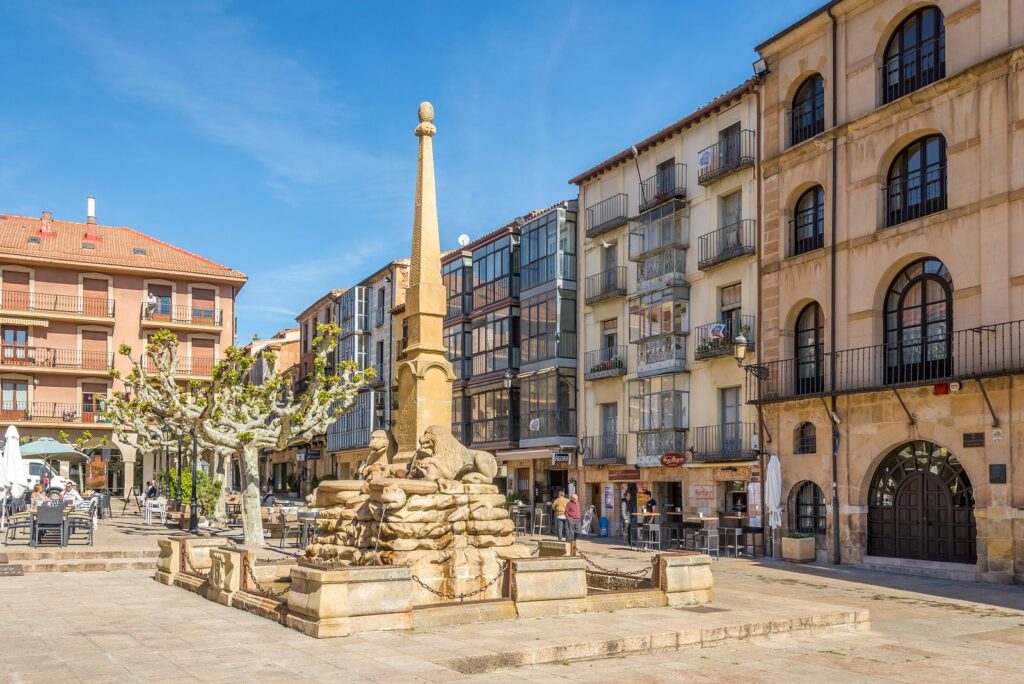
Palacio de la Audiencia and Town Hall
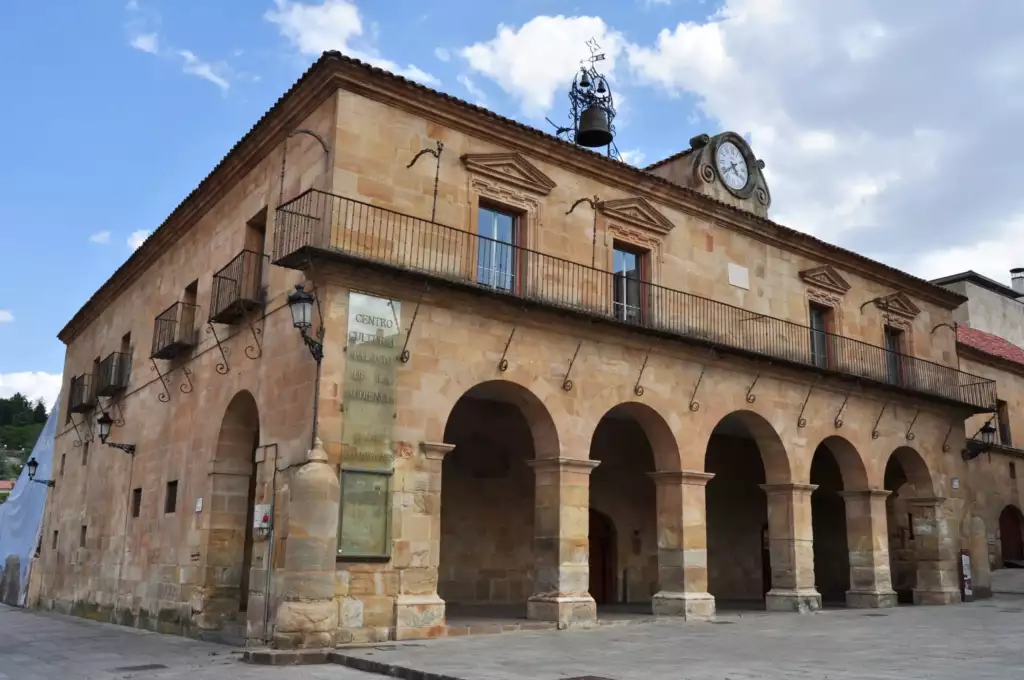
The first, in Neoclassical style, was created in the 18th century and had different uses, from prison to town hall. It has four arches on the façade and is currently a theatre with several exhibition halls.
Next to it we find the town hall, with the coat of arms of the Twelve Lineages of the capital. Both buildings close one of the corners of the Plaza Mayor.
😊 Liking what you’re seeing about Soria? We’re sure you are.
So, how about we save you from scrolling through the blog and bring all the city’s content straight to our app? The best tips, plans and routes covering every must-see spot — with no schedules and at your own pace.
Church of San Juan de Rabanera
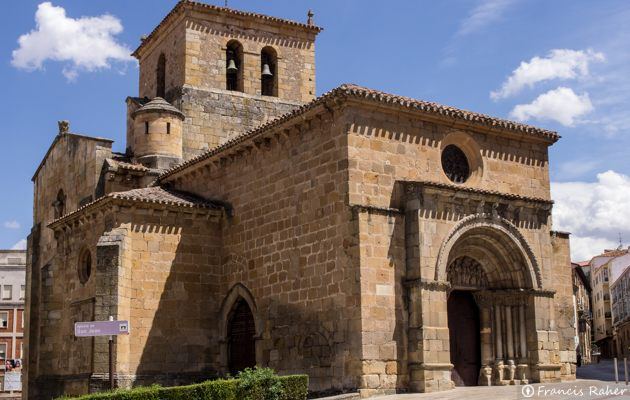
It is enough to see it to know the architectural style to which it belongs. A Romanesque work with a single nave, it has undergone several alterations, which have led it to cover the original entrance (south facing) and another Gothic entrance on the north side.
After undergoing transformations, in the mid-20th century it was restored to its original appearance. Declared a tourist monument, we recommend you go inside and enjoy its altarpieces.
Antonio Machado Institute

Two minutes from El Collado, we find an institute, whose name refers to one of its famous teachers. In fact, he is the famous poet from Seville. The building is an old school that underwent numerous changes until, in the middle of the 19th century, it began its current function. Visiting this historical site is one of the essential things to do in Soria, especially for literature lovers.
The name is due to the fact that Antonio Machado taught French language for many years, a period in which he met his platonic love (Leonor) and which marked the poet’s life and work. Exploring Machado’s legacy is among the top Things to do in Soria, as his poetry is deeply connected to the city’s history and charm.
Co-cathedral of San Pedro

As you can see, its size is already considerable. The title of co-cathedral is due to the fact that it shares the cathedral seat of the province with another one in a village in Soria, El Burgo de Osma.
A quintessential Romanesque building, its history was turbulent, with numerous demolitions and changes of style. The definitive work was created in the 16th century, with a certain Renaissance style, joining the parts already created, among which the Cloister stands out, one of the most beautiful of the style.
There is a fee to visit the Cloister, but if it is open, don’t hesitate to photograph it and enjoy it.
Arches of San Juan de Duero
Probably the most famous sight in the city. The Monastery of San Juan de Duero belonged to the order of the Hospitallers of San Juan. The best known part is the Cloister, of which today only the arches remain, considered one of the most beautiful Romanesque works in the West.
Entrance to the Arches is paid, but we recommend you to visit them, as the contribution is small and it is one of the best views of the city, and the photographs are spectacular.

❌ Forget about planning, just focus on enjoying ✅
DareMapp takes care of everything. Just access our guided tour on your phone
Hermitage of San Saturio
Continuing along the Duero river, we reach the entrance to the Paseo de San Polo, a pedestrian path that gives us access to the most beautiful hermitage among the things to do in Soria.
Built on stone, on the banks of the Duero, its appearance is one of the most spectacular images, especially at sunset. San Saturio, patron saint of the city, used to live in this hermitage. The current hermitage was built in the 17th century, and had been dedicated to San Saturio a century earlier.
Entrance to the hermitage is free (opening hours are quite flexible), and you can visit both the chapel and the rooms where the hermit spent his entire life.
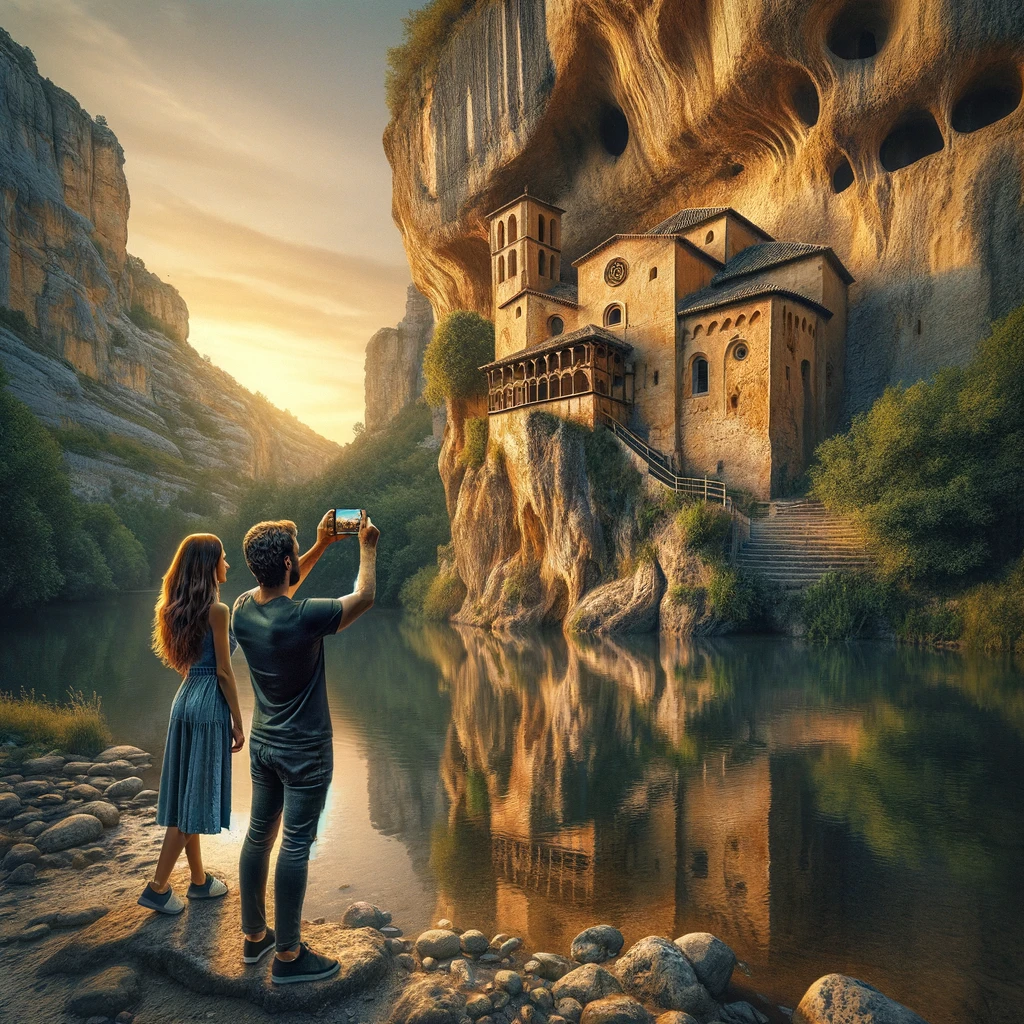
Hermitage of El Mirón
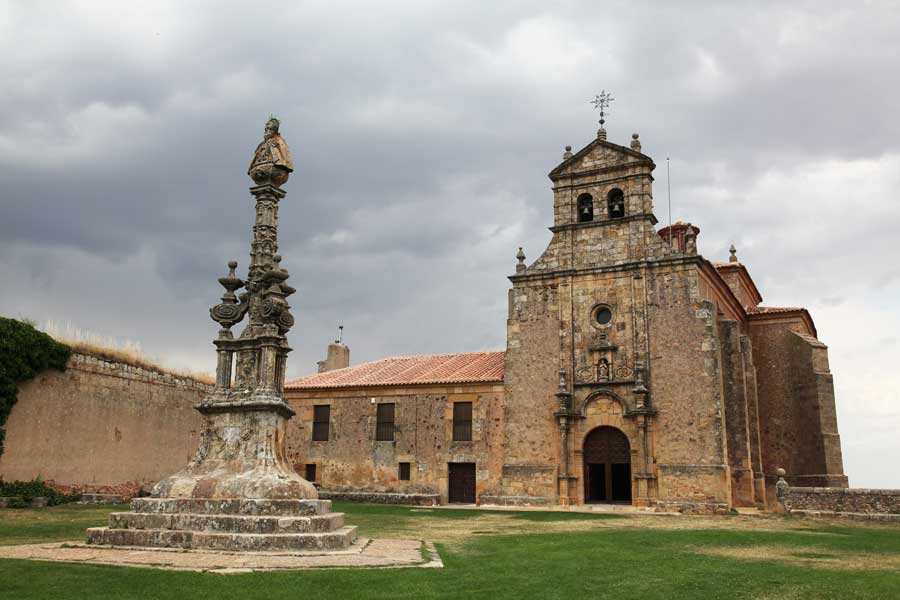
Finally, to end the visit, we recommend a small church located on a hill in the capital, but whose importance is enormous. The hill has the same name, and formed one of the most important things to do in Soria Capital.
This Romanesque style hermitage was abandoned during the depopulation of its neighbourhood, and after the construction of the Hermitage of San Saturio, it also underwent a reconstruction in which only the old apse was preserved. Next to the Hermitage we find one of the few fragments of the Soria Wall, which is almost intact. This hill was one of the entrance routes to the city.
Continuing along the path, you will come to one of the most spectacular viewpoints of the things to do in Soria. Here you will find one of the best-known silhouettes in the city, and you can immortalise an incredible view of the Duero River as it passes through Soria.
So far our recommendation of what we consider to be the best things to do in Soria Capital. If you want a complete experience with many more details, digitally and economically, download the DareMapp app and visit our website to learn more.
That’s the end of our list of what we consider the best places to see in Soria city.
If you want a complete experience with much more detail, in a digital and affordable way, download the DareMapp app and visit our website to learn more.
Remember that with DareMapp you can take a multitude of interactive guided tours.
What better way than travelling and discovering while learning in a fun way?


